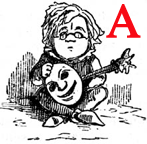
s early as 1837, according to Lionel Lambourne (198), but more likely around 1840, according to Mary Cowling (57), a group of art students at the Royal Academy Schools banded together to form a sketching club. They called themselves The Clique and among their members were William Frith, John Phillip, Henry Nelson O’Neil, Richard Dadd, Alfred Elmore, Augustus Egg and Edward Ward. "They were by no means exclusive," recalled a friend of Phillip's at that time, a promising young Scottish engineer. John Imray (202). Other student friends sometimes joined their discussion groups to agitate for reform at the Royal Academy. The tuition at the Academy Schools was free, but the sessions were often badly taught and the attitude of the senior Academicians, who favoured history paintings and rejected landscapes, was considered old-fashioned.
Later in life, when this cohort of students (who were not affiliated to the Pre-Raphaelites) had become successful artists in the modern idiom, they moved from lodgings in central London into the newly built western suburbs of Bayswater and Kensington. They ended up in close proximity, with Frith living at 10 (later 7) Pembridge Villas, a large house at the Westbourne Park end of the Bayswater Road, from 1853 until 1885. John Phillip lived in Westbourne Grove before moving to 1 South Villas in Campden Hill, Kensington in 1851. Here he was close to Augustus Egg who had a house in Bayswater during the 1840s until he moved to The Elms on Campden Hill in 1854. O’Neil lived just off Westbourne Grove in the 1840s before going to Victoria Road in Kensington in 1863, where he was near neighbours with Alfred Elmore in St Albans Road as well as another friend, Richard Ansdell, the animal painter, who bult Lytham House, a sizeable studio home at 7 (later 39) Victoria Road. Edward Ward and his artist wife Henrietta lived in Lansdown Road, Notting Hill, from 1861 to 1877. According to Imray, "'The Clique' ceased on Dadd's departure to fulfil a professional engagement.... and there was an end to all our happy meetings" (202). Sadly, after showing great promise, Dadd went mad in 1843 and was confined to Bedlam. His sister Maria, who married Phillip, also had mental difficulties.
A mutual friend of the Clique, the landscapist Thomas Creswick, lived nearby in Linden Grove (later Linden Gardens, Notting Hill Gate) from 1836 to 1877. He and Frith collaborated on some pictures, Creswick doing animals for Frith in exchange for groups of figures for his landscapes. Richard Ansdell also collaborated with Frith and Creswick, as well as travelling to Spain with Phillip on painting expeditions.
The extended group remained good friends until their deaths, often socialising and painting each other’s portraits. Egg died aged 47, Philip at 49, and the others mostly in their sixties, an age considered young now but not uncommon at the time. Frith outlived them all by a long margin: having moved to St John’s Wood in 1897 he died at 114 Clifton Hill in 1909, aged ninety.
Links to related material
- Exerpts from Jane Ellen Panton (née Frith)'s Leaves from a Life (Ch. V: "More Especially Our Set")
- Style in Victorian Art
- Campden Hill, Kensington: A Victorian Artists' Colony
Bibliography
Cowling, Mary. "Frith and his Followers: Painters and Illustrators of London Life." William Powell Frith: Painting the Victorian Age. Edited by Mark Bills and Vivien Knight. New Haven and London: Yale University Press, 2006. 57-77. [Review]
John Imray. Grace's Guide. Web. 13 December 2022.
Imray, John. "A Reminiscence of Sixty Years Ago." Art Journal (1898): 202. Internet Archive. Web. 13 December 2022.
Lambourne, Lionel. Victorian Painting. London and New York: Phaidon, 1999 (see pp. 198-99).
Walkley, Giles. Artists' Houses in London, 1764-1914. London: Scolar Press, 1994.
Created 13 December 2022